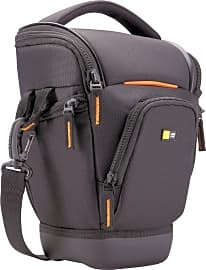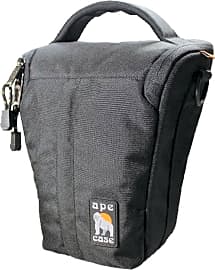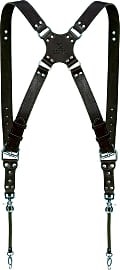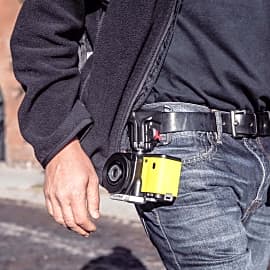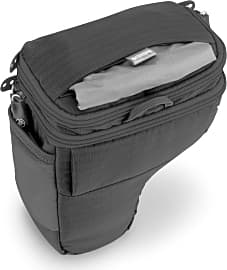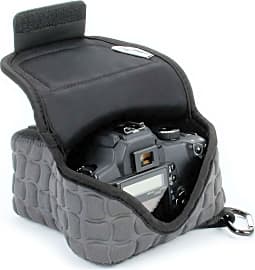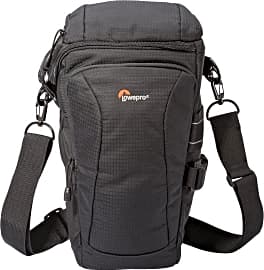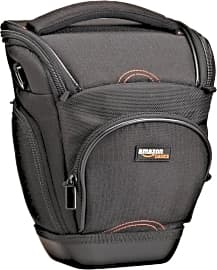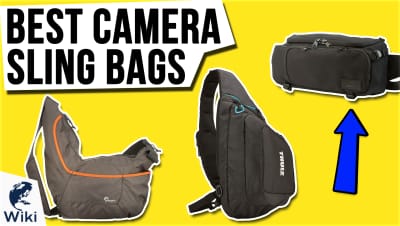The 10 Best Camera Holsters

This wiki has been updated 37 times since it was first published in October of 2015. Whether you are a professional photographer or a somewhat serious hobbyist, your equipment deserves dependable protection when traveling or shooting outdoors. These camera holsters will keep your device and plenty of accessories close at hand and out of harm's way, so you can focus on what’s important: getting that incredible shot. Just make sure it's compatible with your model of camera. When users buy our independently chosen editorial picks, we may earn commissions to help fund the Wiki.
Editor's Notes
May 03, 2021:
We got rid of the Spider Holster SpiderPro, recognizing that the company already had some representation on this list through the Spider Holster BlackWidow, and noticing that the SpiderPro seemed to be suffering from some availability issues. We also removed the Canon 1000 for similar reasons.
We added the Ape Cases ACPRO650 to our list, even though it had many qualities in common with the already-ranked Case Logic SLRC-201 – for example, its shape, high-visibility interior and sturdy top handle – because we liked that it came with a separate pouch for lenses and was offered in multiple sizes, which are both considerations that most models in this category skip over.
The C Coiro Shoulder Harness earned a spot right around the middle of our list, with an all leather-and-metal construction that might make it our most stylish pick. It could also be argued that it’s the least practical, since it provides no extra storage for additional gear and accessories, and offers no weather protection, but we still thought it was worth including, as it’s the only option we ranked that can accommodate two DSLR or mirrorless cameras simultaneously, which is a feature that many professionals will appreciate.
For further camera management solutions – or maybe a matching camera bag to go with the C Coiro Shoulder Harness – you might want to check out our lists of camera messenger bags, camera sling bags and waterproof camera bags.
February 19, 2020:
Lack of availability led us to eliminate the Evecase Carrying Bag and the Case Logic Luminosity. We gave the Think Tank Photo an upgrade, noting its quality craftsmanship, extra storage space for small accessories, and included rain cover. Many photographers appreciate the ability to carry multiple lenses and memory cards.
We noticed that the list was heavy on shoulder-strap models and bags with carrying handles, so we chose to add two items of a different style: a sling harness that sits on the torso and a handy belt-clip holster.
The Spider Holster BlackWidow is simple, discreet, and secure. One word of warning: some users report that it’s not uncommon to forget that you’re wearing it, so if you choose this model, make sure to be aware of your surroundings so that it doesn’t catch on something sharp or knock a fragile item over.
Special Honors
Oberwerth Jan Part fashion statement and part functional accessory, this camera bag from Oberwerth is made with premium cowhide leather and a convenient height-adjustable lid. It tilts at a 45-degree angle to simplify camera removal, and it doesn’t interfere with your movement. oberwerth.com
Pictar Agua Built to deliver in rain or shine, the Agua holster uses a thick synthetic fiber and waterproof zippers to shield your expensive equipment from water, snow, sand and more. Its padded diagonal strap keeps it close to your body, which also makes it easy to draw quickly when a shot presents itself. pictarworld.com
Wotancraft Python Elegantly constructed with leather and high-quality brass hardware, the Python exudes luxury and sophistication — and its price reflects that. A smooth rubber lining helps prevent damage to the camera and lens cap, and the length of the shoulder strap is easy to adjust. wotancraft.tw
Quick Draw: The Camera Holster In Action
More often than not, a photographer will miss something because they haven’t taken their camera out of its bag yet.
No self-respecting photographer likes to admit it, but there are a lot of shots we miss. Shots that we're supposed to get. In my early days as a wedding shooter, I was second shooting for a friend as a last minute replacement, so I didn’t get to meet the couple beforehand as I like to do, and I didn’t know much about them until after the vows were spoken. Well, it turns out there were a bit prudish. When the pastor told the groom he could kiss the bride, I set up and got ready to take the shot, only to have my 70-200mm lens (which, admittedly, was not set to reduce focus hunting) totally miss focus on the shot. Normally, a couple kisses long enough to give you a second, third, and even fourth chance at nailing this picture, but these two were so innocent that they barely pecked. I missed the kiss.
Fortunately, my partner got it, so the marriage wasn’t immediately annulled, but it’s a common tale of a photographer’s equipment preventing them from nailing a moment that's there and gone. More often than not, a photographer will miss something because they haven’t taken their camera out of its bag yet. One of the problems here is that many camera bags are designed with transportation in mind, while fewer are built around the action of shooting.
A lot of shooters simply break out their camera or cameras the moment they arrive at a given location or event, taking whatever they need with them in their pockets and leaving the rest in their bag or in the car. The danger here is that from this point on, they have no way of meaningfully protecting their camera gear if a situation were to arise in which they needed a little extra security. At the end of a standard strap, most cameras swing pretty freely, endangering the front elements of expensive lenses more than any other component in the system. Some shooters turn to camera harness systems in these situations, but in the event of a sudden downpour or even a slight kicking up of sand on the beach, an otherwise reliable harness system will provide little protection to your sensitive gear.
A camera holster solves both of these problems by creating a complete enclosure around your camera to protect it from inclement weather and other environmental hazards, while also guarding the lens and body from bumps and breaks. What's more, a camera holster is designed to allow instant access to the camera the way holsters in the old west allowed an entire class of quickdraw gunfighters to evolve.
Perhaps the only significant downside to a good camera holster is that it forces you to use one lens and one lens only. If your current kit consists of a handful of shorter zooms or just prime lenses, you might find that you need to use your legs a little more, or to invest in a high-quality zoom with a little more range.
How To Choose The Right Camera Holster For You
Now that you understand the specific benefits of owning a camera holster, you still need to figure out which model is right for you. Fortunately, the majority of this selection process is going to come down to fit. While the camera holsters on our list are all universally pretty awesome, they aren't, in and of themselves, universal.
If things are a little too loose, all that jostling around can add danger to an otherwise protective situation.
That being the case, the first thing that you're going to need to do is compare the dimensions of whichever holsters catch your eye to the dimensions of your preferred camera body and go-to lens. You want to find a holster with a barrel area deep enough to accommodate the specific length of your lens, and a top compartment just roomy enough to allow for the body and your dominant hand to fit inside. If things are a little too tight, you're going to have a hard time reaching in to pull your camera out. If things are a little too loose, all that jostling around can add danger to an otherwise protective situation.
Once you know you've got the right fit, you can start to evaluate these holsters by their other features. Some will be better at keeping out water and dust than others, for example. This may come in the form of the bag's inherent construction, but also be on the lookout for bags that deploy some type of all-weather covering.
How you wear a given holster may also hold sway over your decision. Many models are designed to be worn like messenger bags, with their support of straps running over your shoulder and across your chest, and the body of the bag sitting at your hip. Others employ belt loops, which allow the holsters to sit more firmly at one point on your hip than a shoulder strap would allow.
A Brief History Of The Camera Bag
Throughout the latter half of the 19th century, as photographic technology was being developed, most people transported whatever goods they had to move from one place to another in some type of hard-sided luggage. Trunks were common, as we're hard crates. Soft-sided luggage and simple bags as we know them today didn't show up for a little while. Neither did camera bags.
It wasn't until the second World War, including some of the conflicts that led up to it, that photographers began to employee soft, lightweight bags for their caring needs.
It wasn't until the second World War, including some of the conflicts that led up to it, that photographers began to employee soft, lightweight bags for their caring needs. Many of these bags were originally intended for grenadiers, as the small pockets designed to fit grenades also conveniently accommodated lenses.
Upon returning home from the battlefield, many photographers sought out carrying solutions for their camera gear inspired by the bags used overseas. Early attempts by camera manufacturers were almost exclusively tailored to the specific dimensions of the cameras that they produced. That created some very nice bags that suited specific models to a T, but that failed to have the kind of flexibility that modern camera bags can boast. As the decades wore on, third-party manufacturers took up the mantle and began offering much more favorable solutions for everyday shooter, and today, the big camera companies don't waste any research and development on the creation of their own bags.


